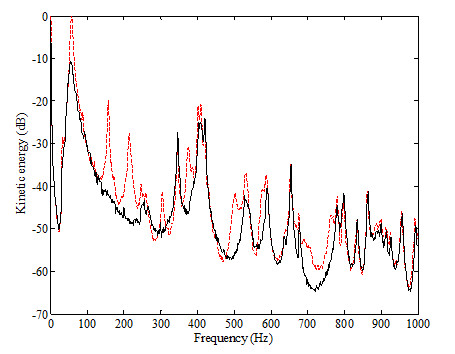Active Structural Acoustic Control systems have given successful results for the control of lower-frequency noise disturbances in relatively small enclosure, such as the cabins of propeller cars.
Traditionally, as cost function, the kinetic energy or radiated sound energy is used to optimize the control effectiveness. However, the kinetic energy of vibrating structures and their radiated sound are not likely to be measured conveniently in some specific cases.
Researchers have observed the convenience of utilization of absorbed energy of force actuators to optimize the feedback gain, whereas the problem of optimization of using piezoelectric patch actuator for feedback control is still unresolved.
Besides, researchers from the Institute of Acoustics (IOA), the Chinese Academy of Sciences have proposed a new cost function, the virtual absorbed energy of the piezoelectric patch actuator for the optimal feedback gain.
Theoretically, it is proved that maximizing the virtual absorbed energy and minimizing the kinetic energy of the plate can obtain almost the same feedback gain.
Recently, the performance of virtual absorbed energy is validated by experiments on the reduction of the vibration and sound radiation of a smart panel with decentralized control loops. This work is also conducted by researchers from the IOA.
Since the system is not unconditionally stable, a phase lag compensator is designed to guarantee the stability for larger feedback gains.
To enhance the stability of the control system, open loop sensor/actuator frequency response function with different physical parameters (such as dimensions of plate and actuator), has been analyzed numerically and experimentally. Finally, the control effectiveness of the reduction of the panel kinetic energy has been assessed by error sensors.
As depicted in Fig. 1, minimizing the virtual absorbed energy and maximizing the kinetic energy can get approximately the same feedback gain, in the case of nine control feedback units working simultaneously. It has the same conclusion as the previous theoretical results.
The optimal feedback gain obtained by maximizing the virtual absorbed energy and the designed digital phase lag compensator is applied in multichannel feedback control system. The control results of nine control loops are presented in Fig. 2.
It should be noted that, when the optimal control gain is implemented, the response at high frequency increases due to feedback spillover (not shown here), but the control system can still be stable.
Funding for the research came from the National Natural Science Foundation of China (Grant No.11004216) and the Knowledge Innovation Program of Institute of Acoustics, Chinese Academy of Sciences.

Fig.1 The variation of the kinetic energy and the virtual energy absorption against the variation of the feedback gain of control unit 5with the other eight units on (Image by YU).

Fig. 2 The kinetic energy of the plate with the excitation between 0-1k Hz without control (dashed red line), and with 9 control loops implemented (solid black line) (Image by YU).
References:
YU Yicheng, SUN Hongling, CAO Yin, AN Fengyan, YANG Jun. Experimental Validation of Virtual Absorbed Energy of Piezoelectric Patch Actuators in Decentralized Velocity Feedback Control of a Plate. Journal of Sound and Vibration (Vol. 341, pp. 1–15, April 2015).
Contact:
YU Yicheng
Key Laboratory of Noise and Vibration Research, Institute of Acoustics, Chinese Academy of Sciences, 100190 Beijing, China
Email:yichengyu1990@gmail.com


